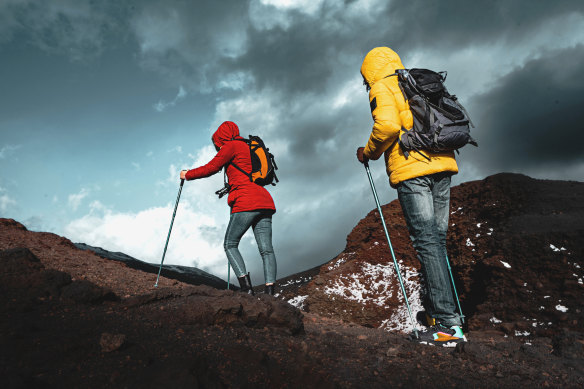The culinary clash causing a food war in Sicily
Tension is building in Sicily, and it’s not the mafia gangs or fiery Mount Etna causing trouble. Rather, it’s a culinary clash that has been smoldering for centuries. At the core of the conflict is the island’s famous arancini balls, said to have originated in Sicily in the 10th-century when it was under Arab rule.
Sicilian guide Katie Maria Grasso explains how, over time, these golden orbs have divided the island into two rival camps. “People in the west use the feminine name, arancina,” she says, with a sniff. “While those in the east, where I come from, use the correct masculine name arancino. Arancini is the plural.”
Gender issues aside, we learn that this clash is really an extension of the feud between Sicily’s two largest cities, Palermo and Catania. From feisty nonnas to celebrity chefs, it is the rice dish that divides the nation. Even a report by the Accademia della Crusca, Italy’s highest language academy, couldn’t resolve the debate.

Arancini stuffed with meat, peas and mozzarella is a Sicilian favourite.Credit: iStock
It’s day four of our seven-day cruise from Athens to Barcelona aboard the newly launched Sun Princess and I’m on a shore excursion to Mount Etna. I’d expected to climb a section of Europe’s highest most active volcano; a lesson in linguistics is a bonus.
“But before we climb, we must eat,” declares Katie, leading us to a cafe near the visitor centre car park. Here we discover the second oddity in this gourmet grudge match – to eastern Sicilians, who have grown up in the shadow of the 3357-metre volcano, an arancino must be cone-shaped, not round.

Climbing on Mount Etna in Sicily.Credit: iStock
As street food dictates, we eat the arancino with our hands and a paper napkin to catch the fallout. With Mount Etna looming behind, I bite into the cone’s crusty peak, a steaming eruption of spicy meat and cheese spilling down like a lava flow. Never has the symbol of a civil war tasted so delicious.
Appetites sated, we turn our attention to the next challenge – Silvestri Crater, an extinct lateral crater on the volcano’s south-eastern slopes. While it can take up to six hours to complete the full summit route (volcanic activity will determine how high you can go) our small group of nine has signed up for Etna lite, with time afterwards to visit the elegant holiday town of Taormina.
Silvestri Crater comprises two volcanic cones that were formed during the 1892 eruption, and while the upper crater promises views of the scorched landscape across to the Gulf of Catania, I choose the lower crater, where a gradual slope leads to its boulder-strewn floor.
Volcanic rubble crunches under our hiking boots, the yellow of lichen-covered rocks soon replaced by black basalt and rust-coloured gravel as we trudge ever deeper. To walk this lunar landscape is to feel the power of the Earth’s geological forces.
In Taormina, it’s the might of the Roman and Greek empires that grabs our attention. From the Corso Umberto I, once the main thoroughfare running between two ancient city gates, we weave our way past cafes, flower-sellers and high-end boutiques to the Teatro Antico di Taormina.
Carved into the hillside, this 5400-seat theatre was built by the Greeks in the 3rd-century BC for dramatic performances or musicals. Enter the Romans stage left, and a few running repairs later the theatre was expanded to make room for games and gladiator battles.

Ancient theatre of Taormina, Sicily.Credit: iStockphoto
It’s a steep climb from the orchestra to the highest row of seats, but the views across to the sea and Mount Etna are a balm to any aching knees.
Back at street level, I reward my efforts with a Nutella arancino, with a firm emphasis on the “o” as I place my order. A smile and a wink from the shopkeeper and I’m on my way with the swagger of a mafia boss.
The writer was a guest of Princess Cruises
THE DETAILS
CRUISE
A seven-night Mediterranean voyage, staying in a cabana mini-suite, departing Barcelona on June 7, 2025, visiting France and Italy and finishing in Naples costs from $3759 a guest on a Princess Premier package. The package includes Wi-Fi (up to four devices per guest), premier beverage package, two specialty dining meals and unlimited fitness classes. See princess.com/sun-princess
FLY
Qatar Airways operates multiple daily flights out of Australia, connecting through Doha to Barcelona and other European cities. See qatarairways.com
Sign up for the Traveller Deals newsletter
Get exclusive travel deals delivered straight to your inbox. Sign up now.